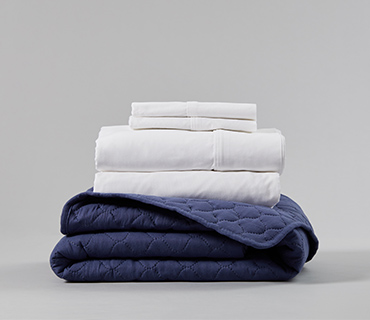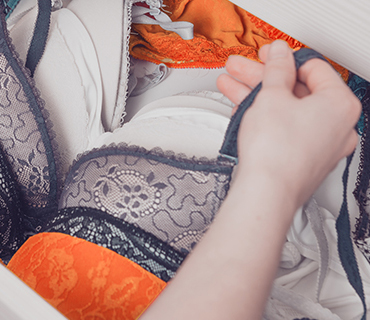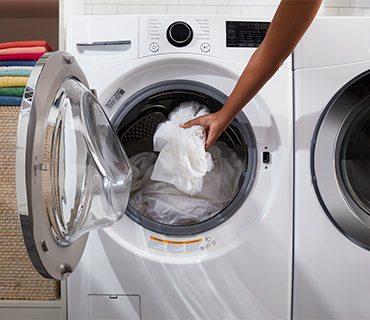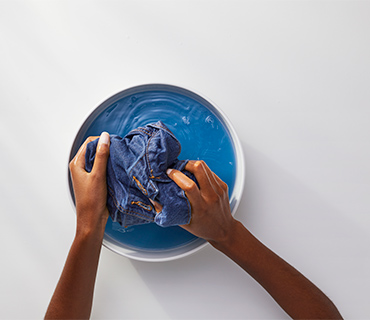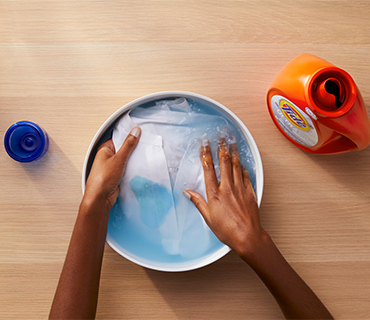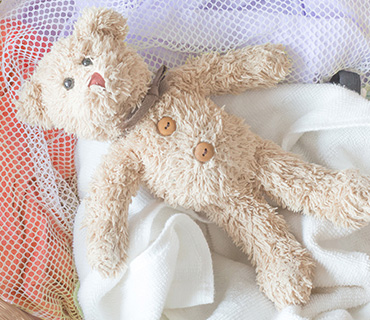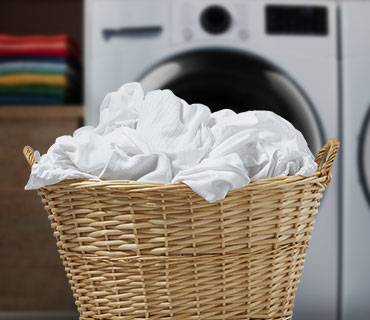Tips for Washing Different Color Clothes
Now that you know how to wash different fabrics, it’s time to learn how to wash your white, light-, and dark-colored clothing properly and keep your clothes looking their best for longer!
Sort Your Clothes by Color
Usually, if we wash an item with a dark color and an item with a light color, some of the darker tones will ‘transfer’ onto the light item. But the item doesn’t even need to be white to suffer from color transference. The same thing can happen with light-colored clothes.
This is why it’s important to sort your clothes ideally into 3 color piles:
White clothing
Light-colored clothing
Dark colored clothing
Whites Should Always Go Separately
White laundry is the most likely to receive color from all other items, so make sure to always wash plain white clothes and white clothes with light-colored patterns in a separate batch. When it comes to keeping your clothes white and bright, nothing beats Tide Plus Bleach Alternative Liquid Laundry Detergent. Read our article on how to wash whites for more information on the subject.
What Are Light-Colored Clothes?
Your light-colored clothes are perfectly safe to be washed together with your whites. That means light-blue, light-brown, pink, light-green, lavender, yellow, beige, cream, orange, fuchsia and other pastel shades can go into the same pile as your whites, light greys, and garments with white background prints.
Check out our detergent selection and learn more about washing colors here.
What Falls Under Dark-Colored Clothing?
The dye in darker clothes can easily seep into lighter clothes during the laundry process, that’s why it’s best to wash dark-colored garments (black, grey, dark-brown, dark-green, olive, purple, indigo, navy blue, dark-red, crimson, and so on) in a separate batch. To keep your darks bold and your colors bright, use Studio by Tide Darks & Colors Liquid Laundry Detergent.
Can You Wash Different Colors Together?
Although it might save you some time and energy, taking a shortcut such as washing different shades of colors together is not a good idea when doing laundry, since the color bleeding can ruin your clothes easily.
If you do have to wash different colors together (e.g. whites with lights), always use cold water, since it can mostly prevent transference.
But keep in mind that clothes also should be separated by fabric types, and mixing denser fabrics with lighter ones can wear out the lighter clothing quicker and easier from the constant friction and rubbing together with the harder and denser fabric.





